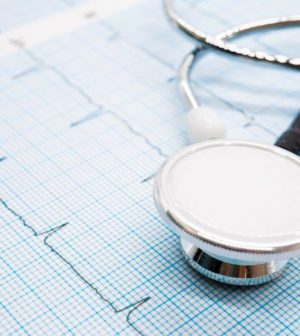- Skip Storing This Everyday Product in the Fridge Door
- Green Tea + B3 Pairing May Boost Brain Health
- Navigating Your Midlife Crisis: Embracing New Possibilities
- City Raccoons Showing Signs of Domestication
- Mapping the Exposome: Science Broadens Focus to Environmental Disease Triggers
- One Week Less on Social Media Linked to Better Mental Health
- Your Brain Changes in Stages as You Age, Study Finds
- Some Suicide Victims Show No Typical Warning Signs, Study Finds
- ByHeart Formula Faces Lawsuits After Babies Sickened With Botulism
- Switch to Vegan Diet Could Cut Your Greenhouse Gas Emissions in Half
A-Fib May Be 3 Times More Common Than Thought

The number of Americans with a potentially dangerous heart rhythm condition is three times greater than previously thought, a new study claims.
An estimated 5% of the population — 10.5 million U.S. adults — have atrial fibrillation, according to new estimates from the University of California, San Francisco (UCSF).
Previous estimates held that around 3.3 million adults had A-Fib, but those projections hadn’t been updated in more than two decades, researchers noted.
“These data provide objective evidence to demonstrate that prior projections severely underestimated how common it truly is,” said senior researcher Dr. Gregory Marcus, a cardiologist and electrophysiologist at UCSF Health.
A-Fib has been on the rise for at least the past decade, driven by the aging of the population, researchers said. Increasing rates of high blood pressure, diabetes and obesity are also contributing to more people developing the condition.
With A-Fib, the upper chambers of the heart, called the atria, start to beat irregularly.
This allows blood to pool and potentially clot in the atria, increasing a person’s risk of stroke.
Untreated A-Fib raises a person’s risk of stroke fivefold, and also doubles the risk of heart-related death, researchers said.
“Atrial fibrillation doubles the risk of mortality, is one of the most common causes of stroke, increases risks of heart failure, myocardial infarction [heart attack], chronic kidney disease and dementia, and results in lower quality of life,” said lead researcher Dr. Jean Jacques Noubiap, a postdoctoral scholar at UCSF with a specialty in global cardiovascular health.
“Fortunately, atrial fibrillation is preventable, and early detection and appropriate treatment can substantially reduce its adverse outcomes,” Noubiap added in a UCSF news release.
For the new estimate, researchers analyzed the medical records of nearly 30 million adults treated in California between 2005 and 2019. About 2 million of these patients had been diagnosed with A-Fib.
The number of A-Fib diagnoses grew over time, rising from about 4.5% of patients from 2005 to 2009 to 6.8% of patients between 2015 and 2019.
After standardizing the data to reflect the entire country, researchers estimated that at least 10.5 million people have A-Fib.
The new study was published Sept. 11 in the Journal of the American College of Cardiology.
“Physicians recognize that atrial fibrillation is often encountered in essentially every field of practice,” Marcus said.
The researchers also noted that new technologies might reveal that A-Fib is even more common than their new numbers.
“With the growing use of consumer wearables designed to detect atrial fibrillation combined with safer and more effective means to treat it, this current prevalence of atrial fibrillation in health care settings may soon be dwarfed by future healthcare utilization that will occur due to the disease,” Marcus said.
More information
The American Heart Association has more about atrial fibrillation.
SOURCE: University of California, San Francisco, news release, Sept. 11, 2024
Source: HealthDay
Copyright © 2025 HealthDay. All rights reserved.










